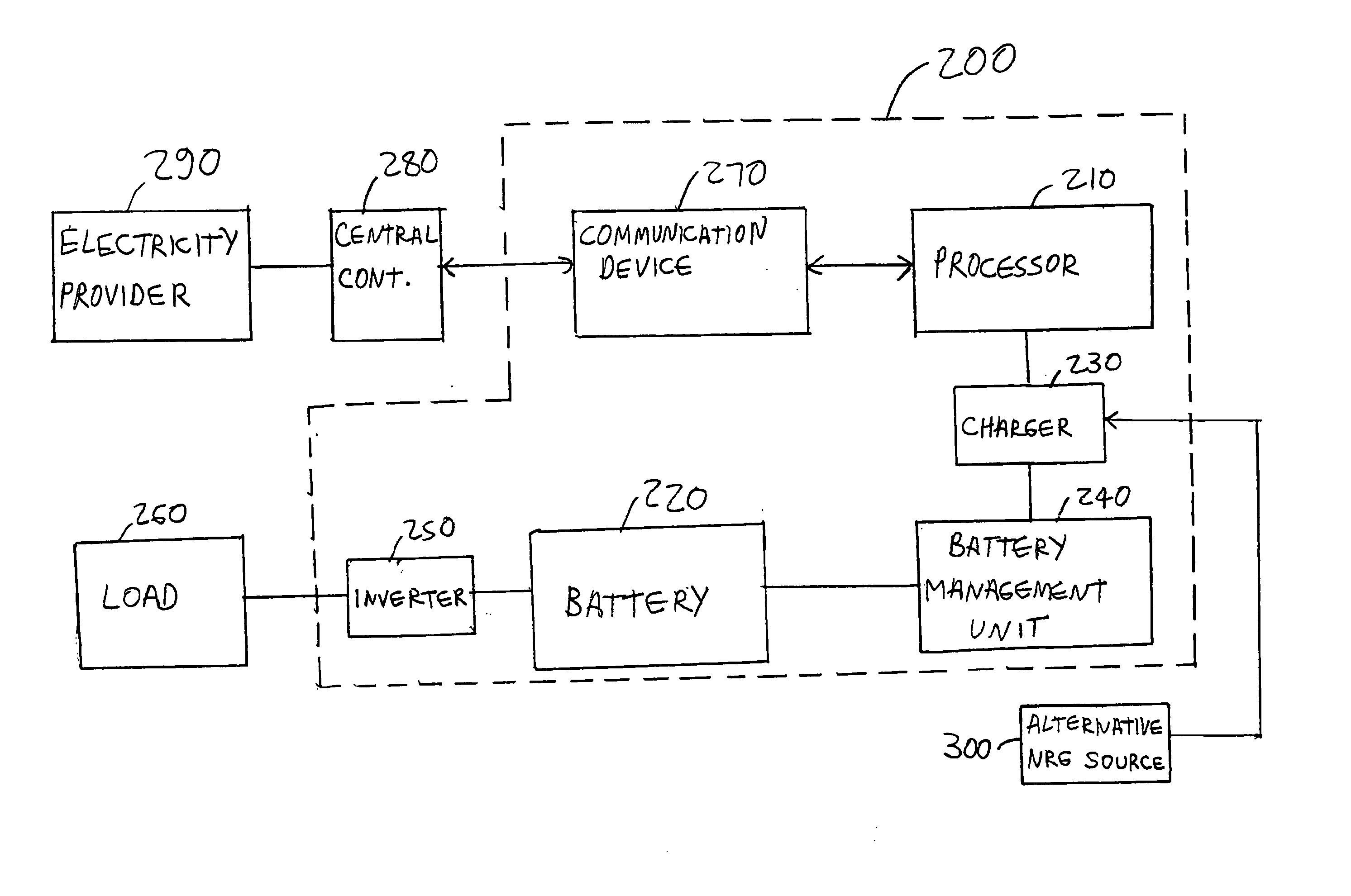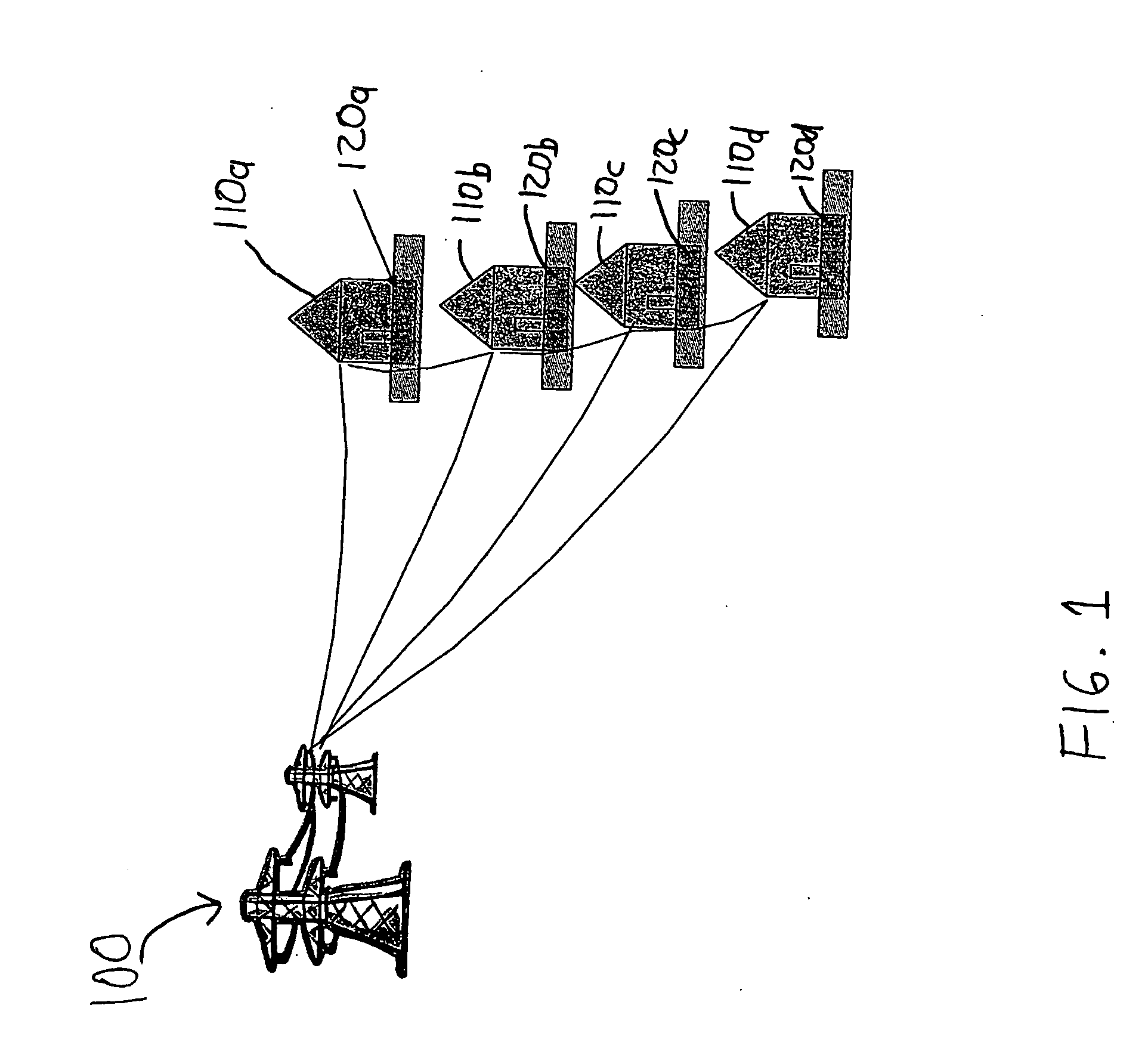Consumer-sited power management system and method
a power management system and customer-site technology, applied in emergency power supply arrangements, process and machine control, instruments, etc., can solve the problems of reducing the overall efficiency of the power company's capital equipment, affecting the demand for electricity, and affecting the supply of electricity during peak times. , to achieve the effect of reducing power costs for customers, and reducing capital cost expenditur
- Summary
- Abstract
- Description
- Claims
- Application Information
AI Technical Summary
Benefits of technology
Problems solved by technology
Method used
Image
Examples
Embodiment Construction
[0014] Conventional methodologies for power distribution require peaker plants to ensure an adequate supply of electricity during times of high demand, which increases the cost of electricity to the utility and the customer, raises levels of environmental pollution, and reduces the efficiency of the utility's capital equipment. Furthermore, conventional power distribution systems do not include emergency power provisions for the premises of a customer. The present invention addresses and solves these problems stemming from conventional power distribution systems.
[0015] According to the present invention, an electric power management device (also known as a “reliability box”) having a battery and a communication system is provided at the premises of a consumer of electricity (the “customer”). The power management device is connected to an electric power provider, which charges the battery at an off-peak time when a demand for electricity is low, and discharges the battery to provide...
PUM
 Login to View More
Login to View More Abstract
Description
Claims
Application Information
 Login to View More
Login to View More - R&D
- Intellectual Property
- Life Sciences
- Materials
- Tech Scout
- Unparalleled Data Quality
- Higher Quality Content
- 60% Fewer Hallucinations
Browse by: Latest US Patents, China's latest patents, Technical Efficacy Thesaurus, Application Domain, Technology Topic, Popular Technical Reports.
© 2025 PatSnap. All rights reserved.Legal|Privacy policy|Modern Slavery Act Transparency Statement|Sitemap|About US| Contact US: help@patsnap.com



